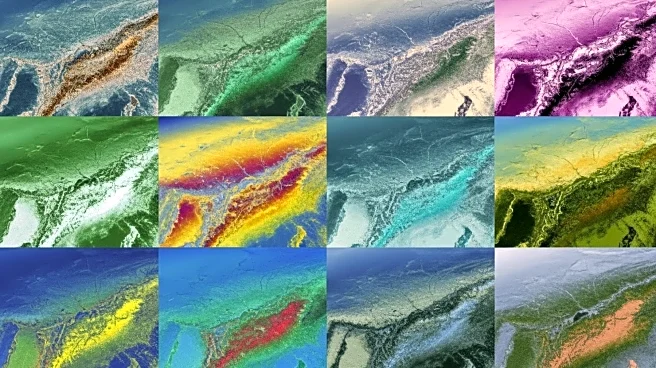What is the story about?
What's Happening?
A recent study has documented significant temporal variations in functional diversity across five major biomes using remote sensing technology. The research highlights the importance of incorporating temporal variation into assessments of functional diversity, which is crucial for ecological research and biodiversity monitoring. The study found that rainforests exhibit minimal seasonal variation due to stable climatic conditions, while savannas and shrublands show stronger seasonal changes linked to wet-dry cycles. Mediterranean ecosystems and temperate grasslands experience substantial seasonal variation, peaking during spring and autumn. The study emphasizes that temporal snapshots may not fully capture functional diversity, and comparing estimates across regions with different seasonal behaviors may be misleading. The research underscores the value of hyperspectral remote sensing for tracking these dynamics, despite challenges such as data gaps due to cloud cover.
Why It's Important?
Understanding the seasonal dynamics of functional diversity is crucial for effective ecosystem monitoring and conservation efforts. The study's findings can inform biodiversity assessments and help predict ecological responses to environmental changes. By using remote sensing, researchers can track plant traits across time and space, providing valuable insights into ecosystem health and resilience. This approach is particularly beneficial for monitoring remote or inaccessible regions. The study also highlights the need for improved satellite coverage and cloud-masking algorithms to enhance global monitoring capabilities. As hyperspectral missions advance, they promise a more comprehensive understanding of functional diversity, which is essential for addressing ecological challenges and informing policy decisions.
What's Next?
Future hyperspectral missions, such as CHIME and SBG, are expected to provide a more detailed spatiotemporal picture across all biomes, enhancing the ability to monitor functional diversity globally. There is a need for more dense temporal coverage of hyperspectral acquisitions to address current data gaps. Additionally, the development of robust, temporally adaptive models for trait retrieval will be crucial. As researchers continue to share data, including those from underrepresented regions, the capacity to monitor functional diversity will expand, offering new opportunities for ecological research and conservation.
Beyond the Headlines
The study highlights the potential of deep learning-based trait estimation to improve the monitoring of functional diversity. By leveraging large, curated datasets, researchers can infer a wider range of traits essential for describing functional diversity. This approach can enhance the understanding of ecological processes and inform strategies for biodiversity conservation. The integration of advanced remote sensing technologies with ecological research represents a significant step forward in addressing global environmental challenges.
AI Generated Content
Do you find this article useful?














